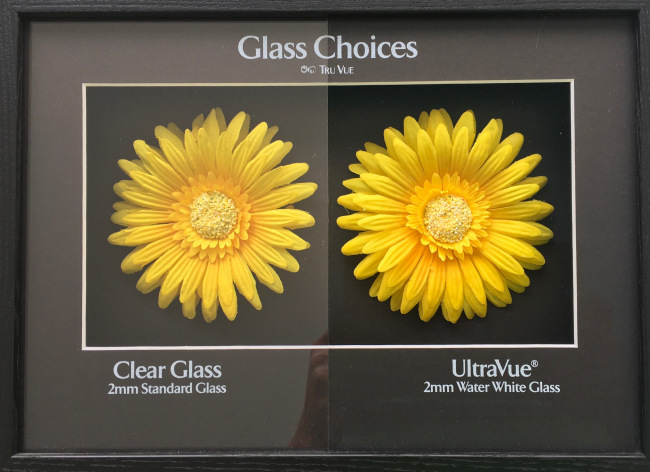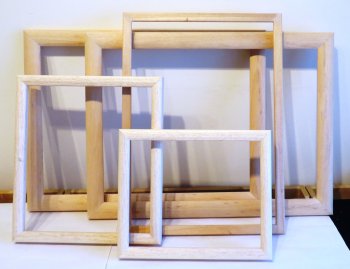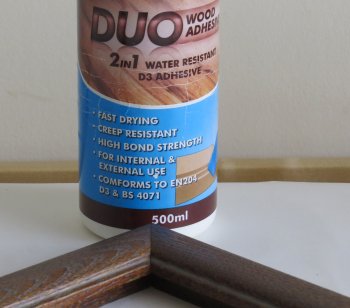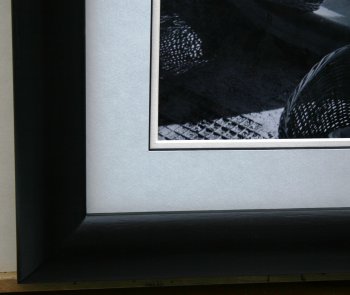Materials used in picture framing
I have accounts with some of the larger stockists and can normally have items delivered within a week, so if I don't have the materials you want me to use in stock, I can get them quickly.
Frame Mouldings
These come in a mind-boggling range of shapes, styles, colours and materials and can be selected from on-line catalogues or a paper version. There are quite literally thousands to choose from.
I prefer, in a lot of cases, to use bare-wood mouldings so they can be finished to suit the artwork or item being framed. This takes more time, but guarantees the finished product will fit in with colour schemes and designs.
Mountboards
Mountboards come in various grades. I only use quality brands, which are available in a wide range of colours and shades. Standard white-core is the most popular because of the range of colours. However, Conservation level mountboard may have a limited range of shades, but it will offer longer term protection. Museum board is the most expensive, but, because it is made from 100% cotton rag, it will not deteriorate or cause any longer-term damage to your artwork.
Glass
When it comes to glass, there are more and more possibilities these days, with a range of prices to match the cost of production, research and speciality.
Standard float glass
This is the most common standard picture glass. It is slightly green, which causes a minor colour-shift in the framed item. This is barely noticeable, but if it is an effect you can't live with, there are many other options.
Anti-Reflection Glass
A high quality, colourless glass that is lightly etched to reduce glare. This type of glass needs to be close to the artwork, so should not be used in 3D framing or frames with more than one layer of mountboard. It is ideal for photographs with a gloss finish. It is available with up to 99% UV protection.
Reflection Control Glass (coated)
A high quality, water-white glass with an anti-reflection coating, giving high clarity. This is also available with 70% or 99% UV protection. It is more expensive but more suitable than standard glass for viewing and offering a level of protection in framing artworks of value.
UV Protection Conservation Glass
Conservation glass is coated to protect valuable artworks from up to 99% of harmful UV rays which can cause colours and materials to fade or degrade over time.
Anti-Reflection and UV Protection Museum Glass
Museum standard glass is treated with both anti-glare and UV protection whilst offering perfect clarity. This is, understandably, the most expensive type of glass for protecting high value items and works of art.
Plastic Glazing
This is also available in a number of similar options to the glass range, but is recommended for use in large frames, public areas, schools, children's rooms, etc., where safety, weight or size are a concern.









